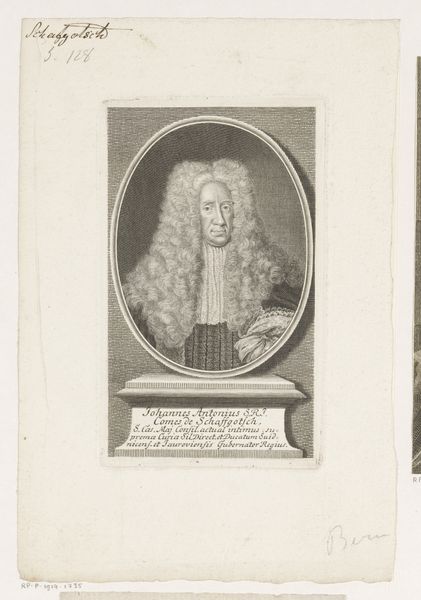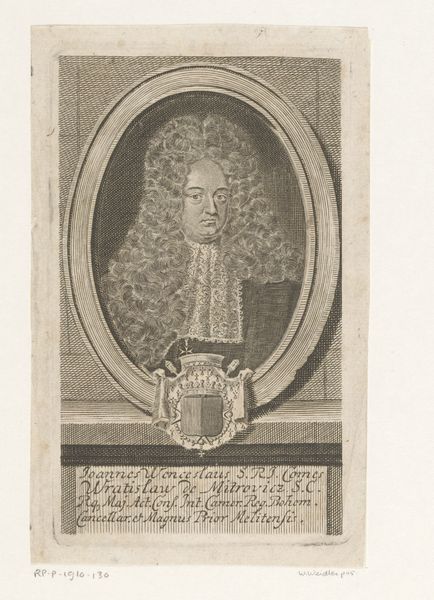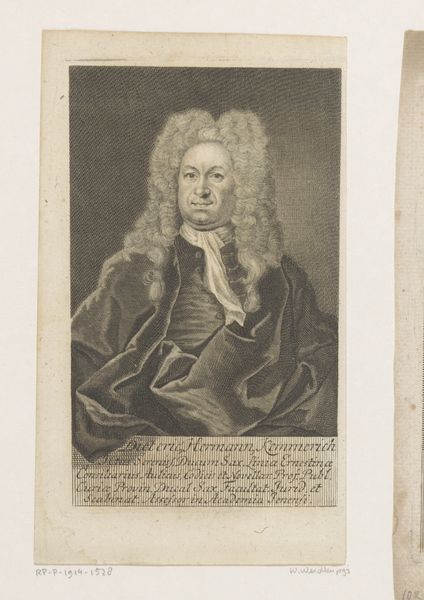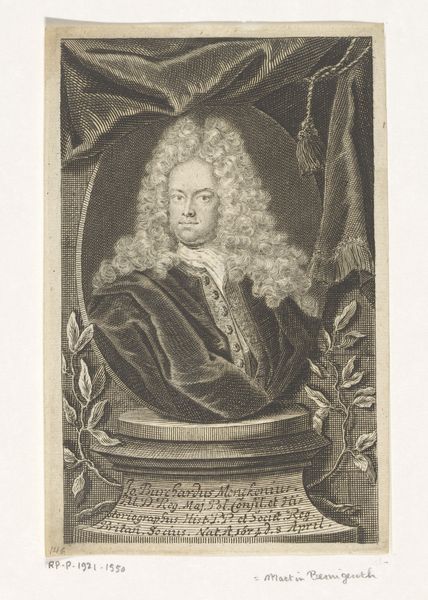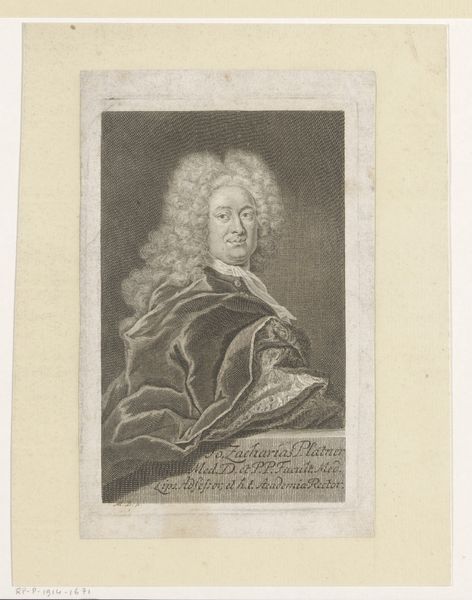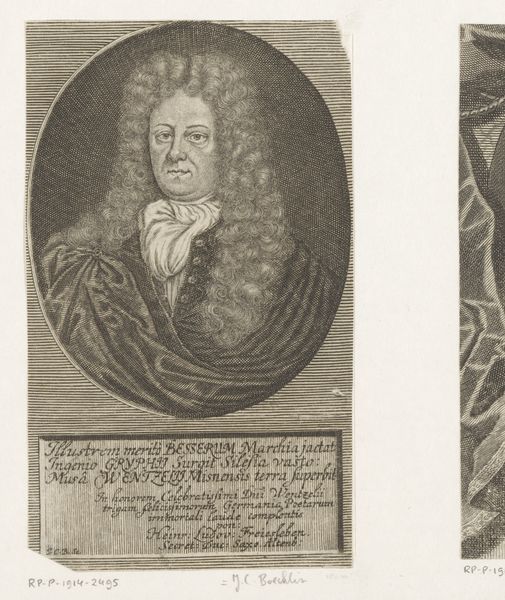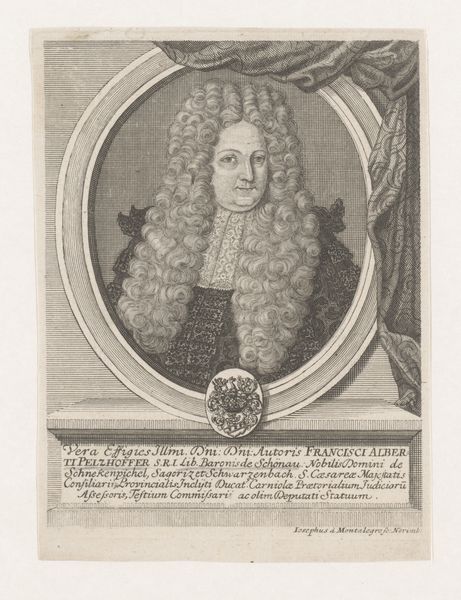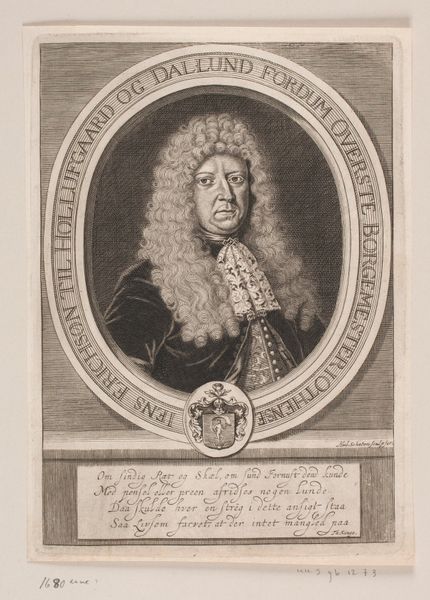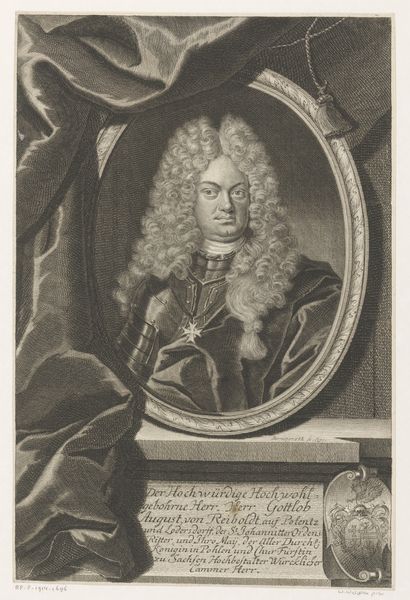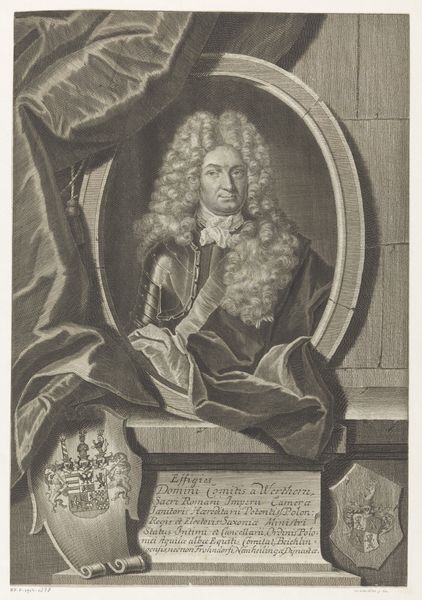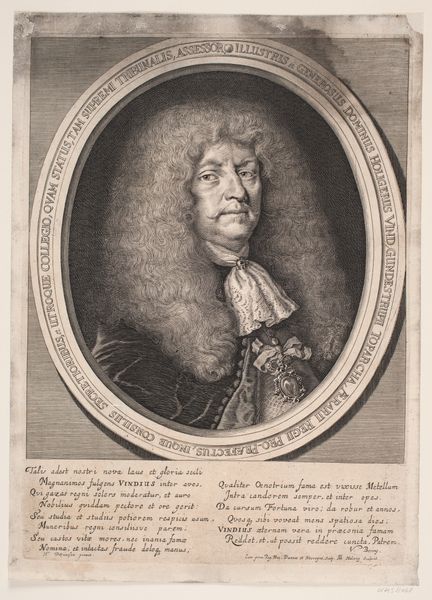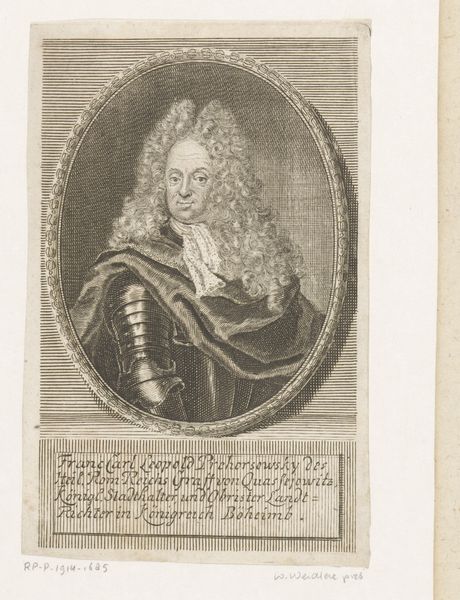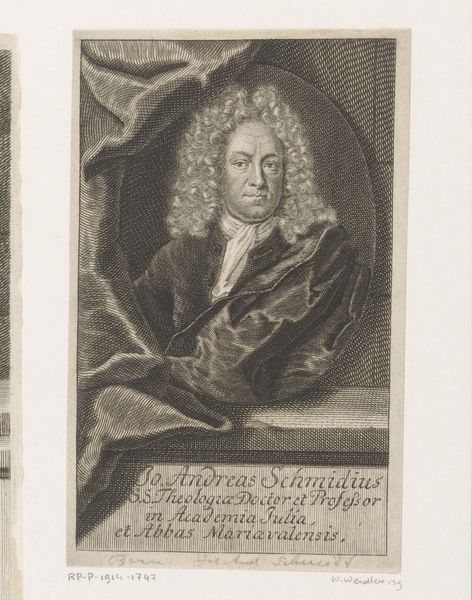
print, engraving
#
baroque
# print
#
old engraving style
#
history-painting
#
engraving
Dimensions: height 147 mm, width 96 mm
Copyright: Rijks Museum: Open Domain
Editor: Here we have Martin Bernigeroth’s 1718 engraving of Johann Adrian von Plenck, held by the Rijksmuseum. The fine lines and detail really strike me. It's such an elaborate portrait. What’s your take on this print? Curator: Looking at this engraving, I see a product of labor, specifically reproductive labor. The portrait's value isn't solely in its artistic merit, but also as a commodity. Engravings like this circulated widely, disseminating images of power and influence. Consider the economic investment: the engraver's time, the materials like the copper plate and ink, and the eventual sale and distribution. It challenges our concept of art because it was created for a commercial market. Editor: So, the engraving becomes more than just an image; it’s also about commerce and labour? Curator: Precisely. Bernigeroth wasn't just expressing artistic genius; he was crafting a product for consumption, fulfilling a demand. It also suggests certain networks that the elite are engaged with. Note the way class is visualized through fashion - the clothing production itself, the labor, as well as consumption of clothing as indication of status. Think about who would have purchased and displayed this print. Editor: I see your point! We tend to focus on the “who” of the sitter and the artist, but the “how” – the means of production and consumption– really shifts our understanding. It wasn’t just art for art's sake. Curator: Exactly! Understanding art as a material product interwoven with economic and social systems adds another layer of depth, don't you agree? Editor: I absolutely agree. It opens up the way I’ll think about art, and engravings specifically, in the future. Thanks for shedding light on this.
Comments
No comments
Be the first to comment and join the conversation on the ultimate creative platform.
